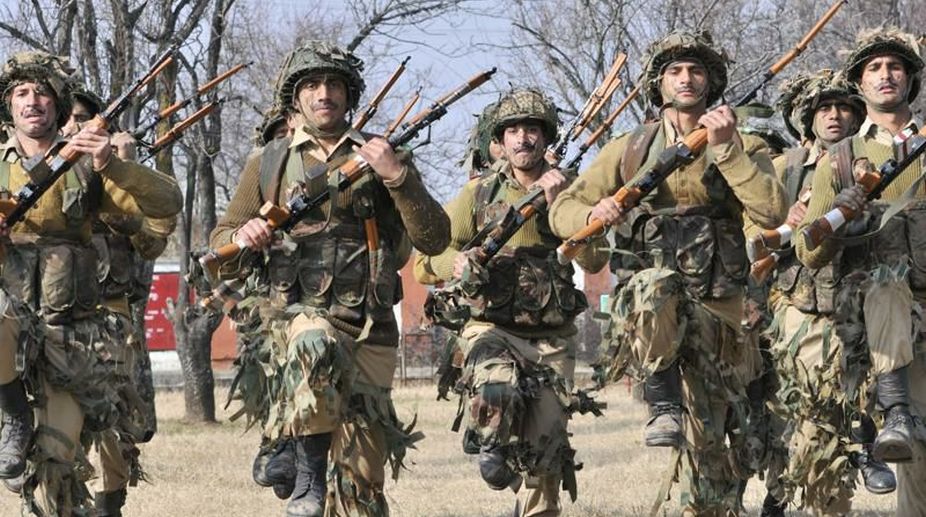As compared to other organisations in the country, the armed forces are the only ones without a voice. They have no means of venting their unhappiness at government decisions to those that matter, no union to support their demands, nor any right to protest while wearing the uniform. Their top hierarchy can only raise its voice and request the government through interactions and notes, but can do little if the government is unrelenting. These silent warriors only have their veterans, who having shared the pains and difficulties of service, understand their constraints and have become their public voice.
The culture of silence and discipline ingrained while in service tends to remain within an individual even after his retirement. Hence open protests by veterans are rare. In most cases he continues to behave responsibly and disciplined. Even in the OROP protests, there was a large community which felt that agitating was incorrect by veterans and legal action was the option. Hence, the long-drawn agitation took time to gain momentum, solely because a cultural change was essential amongst the veteran community.
Advertisement
Once it gained momentum, there was nothing stopping the enthusiasm till the initial release of OROP. Most participants quit after the initial release because they felt the government had acted, despite the action being half-baked. Even at the peak of the agitation, there was no violence, no insults to the government, solely cries for rights and shouts of ‘Bharat Mata ki Jai’, in contrast to the behaviour sometimes visible in assemblies, parliament or in other protests.
The visuals of aged veterans being manhandled by police or of surrendering their medals, which every soldier considers most dear, hurt sentiments across the nation and compelled the government to act. The agitation was aimed at resolving pension issues of not only veterans but also of generations of serving and future soldiers, as every soldier of today is a veteran of tomorrow. Hence, the agitators protested not solely for themselves but for the tomorrow of those now in service. The military was never criticised, despite claims of non-involvement of its hierarchy.
However, in recent times, there has been a marked change in the comments by veterans on social media. Critical comments against the service, at times even based on fake content, have been on the rise. A recent case where social media became a battle ground was the Major Gogoi incident, where there were clearly two opposing veteran groups, one for and the other critical of the service. The other was the helicopter crash in Arunachal, after which the remains of the deceased were initially lifted and brought to the base in cardboard boxes.
While the army termed it as an aberration and the few who have served in the area understood the difficulties of rescue in such terrain, some veterans ignoring sane voices were extremely critical and accused the army of insensitivity, ignoring the fact that the armed forces respect their martyrs and treat each one with dignity and honour.
The honour provided once the remains reached the base and beyond was ignored. This increased unwanted criticism has become a norm. Many, when questioned, state that it is a means of advising the armed forces to improve, while enhancing awareness amongst the public.
There are some who are permanently critical because they bear a personal grudge against the organisation. The media is only too happy when such differences crop up and seek to play one group against the other on national channels.
The critiques may gain media glare, but their negative comments have impact. Social media being open is regularly injected with comments from forces inimical to the nation, seeking to impact morale. These when circulated with adverse comments spread faster even within the serving community, causing greater harm than good.
On many occasions there have even been comments stating that the service chiefs should resign in case the armed forces are not granted their due, without understanding that such an action is tantamount to mutiny, unheard of in independent India. The veterans are always a respected community within the armed forces family. Their experience and contribution has been respected by the organisation, if not the government.
The present young generation look up to them as mentors. They must realize that it is the service which has made them what they are today, respected members of the community. The services would continue to care for them, solely because they sacrificed their youth for the service of the nation. If they profess a negative outlook, continue criticising the service, rather than supporting it, they project a poor image of the military and its hierarchy amongst the public and within the serving community.
It also impacts those seeking to join it as a career. The serving community is also on social media, though not as active participants. But they observe and are influenced. Hence veterans as a community need to understand their role in impacting the minds of serving services personnel. Positive approach builds confidence and trust into the system, negative outlook erodes the same.
The more senior the veteran, the more positive and advisory should be his role, after all he may be a role model for many. Wrong or negative actions should be gently criticised, as the incident may not have been intentional but accidental.
A positive veteran community would enhance service prestige, while a negative one would degrade it in the public eye. Also missing are the media cells of the services.
Once malicious content is identified on social media, they need to step in and clarify if it is false. Silence on their part adds to the damage. They are aware but are not given freedom to act.
Unless this is done, malicious posts on social media would continue spreading, harming the reputation of the military, both outside and within.
(The writer is a retired Major-General of the Indian Army)











